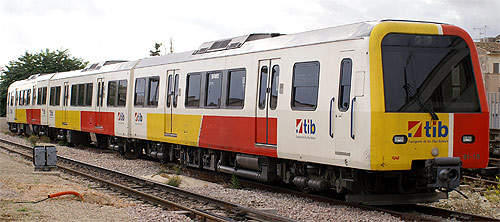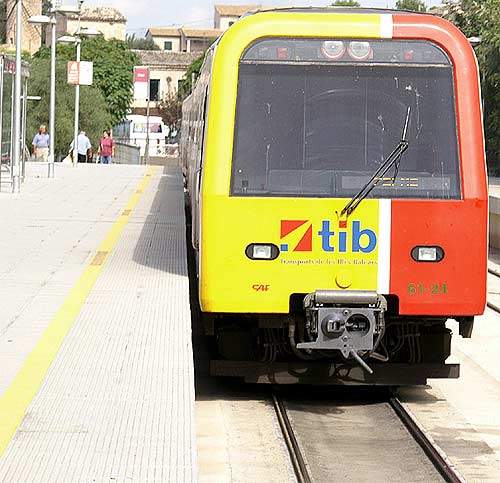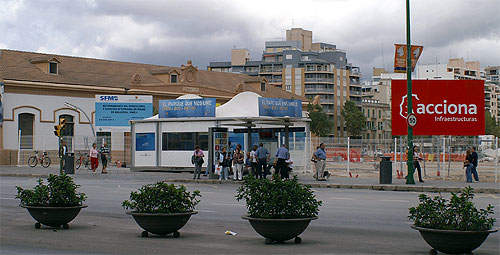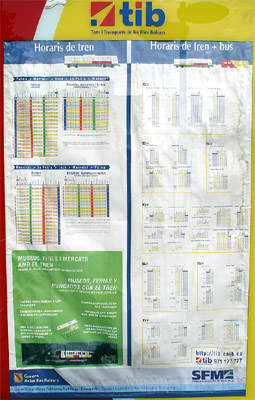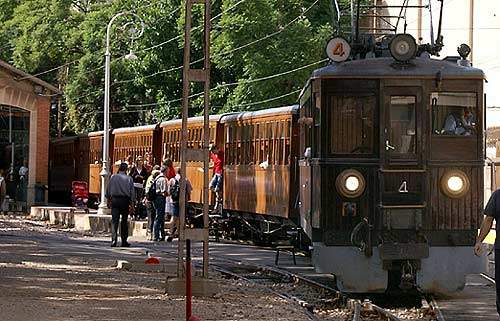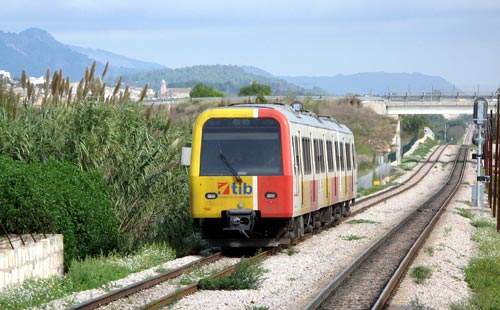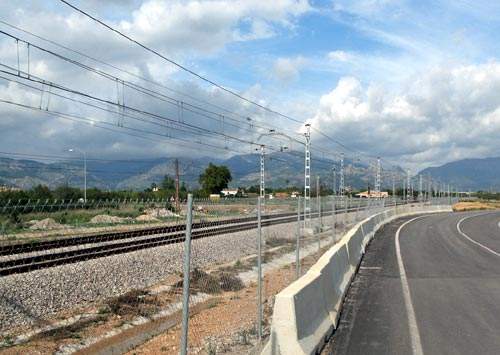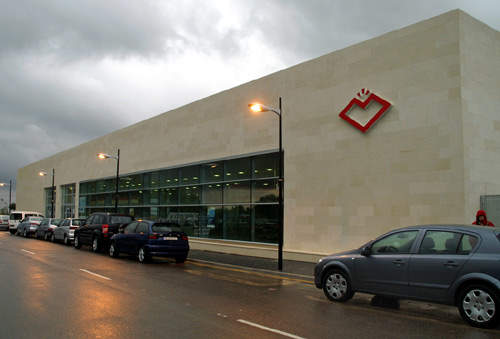The largest of the Balearic Islands, Mallorca (Majorca – Castilian/Spanish) has around half of its resident population of around 780,000 (2007) in the Palma urban area, Spain’s 12th largest. Confined by the sea along the southern rim, having historic street layouts, and being a focal point for tourism flows, Palma experiences severe road congestion. This is within the built-up zone and also affects those forced to transit the area, as with many using the island’s airport (Spain’s third busiest) to the east of the city.
The electrified Ferrocarril de Sóller (FS) line dating from 1912 through the Serra de Tramuntana to Sóller (in turn connected by tram to its port) now plays little role beyond tourism. The main metre-gauge rail system pre-dating mass tourism had been cut back by 1981 to a 29km (18 mile) line from Palma to the inland industrial town of Inca.
The implications of population and tourism growth were clear to the newly formed provincial authority, Govern de les Illes Baleares. Serveis Ferroviaris de Mallorca (SFM) was created to operate and develop rail as a more significant part of the island’s transport infrastructure.
Although physically separate and of different gauge, SFM’s and Ferrocarril de Sóller (FS) had adjacent termini at Plaça d’Espanya, one of Palma’s busiest thoroughfares.
The project
A tangible reversal of rail’s decline came with the rebuilt 17km (11 mile) Inca-Sa Pobla line opened in 2001, followed by the 2004 reopening from Inca to Sineu and Manacor, Mallorca’s second largest town. Under the Govern de les Illes Baleares’ 2005–12 plan, more rail and light rail development became prerequisites for achieving their 2012 target of 25% of land journeys being by public transport.
The new Palma intermodal station was planned to service the future infrastructure and be capable of handling a train every three minutes. Integrated rail and road public transport became publicised under the Transport de les Illes Balears identity. In late 2004 a new rail mode was proposed for the island, with a project cost of €235m for a metro line extending north from Palma.
Rolling stock
Six two-car diesel-hydraulic units, delivered by Spanish company CAF from 1995 replaced previous diesel multiple units, soon proving to be inadequate for the growing passenger numbers and line extensions. Eight similar units plus four centre trailers to create some three-car units were added by 2002.
Subsequent orders have allowed for progressive upgrading of the earlier stock. Maintenance is at the depot near Pont d’Inca on the outskirts of Palma.
CAF is also supplier of the initial order for six two-car electric sets for the Metro, the first cars being delivered in December 2006. Testing began on the energised open-air Universitat de les Illes Balears (UIB)-Son Sardina section in early 2007.
Infrastructure
SFM stations were variously new or substantially updated with the revival of rail services, with some unsuitable older buildings put to alternative uses. The Plaça d’Espanya site was cleared and a temporary terminus allowed construction access for building a new station to integrate rail, light rail/metro and buses.
Mainly using cut and cover methods (the ground to be restored as a linear park), tunnels for two rail and two metro tracks were constructed for the three-level Estación Intermodal de Plaça d’Espanya, with five island platforms to serve ten tracks. Jacint Verdaguer briefly served as a temporary Palma terminus, although d.m.u. operation in the sub-surface station in a housing area prompted complaints from passengers and residents, problems echoed when the Intermodal station opened.
The light rail (Metro) Line 1 is from Palma Estación Intermodal to UIB. The double-track metre-gauge 1,500V dc overhead electrified line takes a new alignment through north-west Palma. In places close to the FS line with a surface interchange at Son Sardina, Line 1 is underground for most of the 8.3km (5.2 mile) route with nine stations, of which only Son Sardina is on the surface.
Maximum line speed is 100km/h (62mph), scheduled for an end-to-end timing of 12 minutes. Trial services began in April 2007, with free travel up to September that year when revenue operations began.
Signalling / communications
The traffic control centre is at Palma Estación Intermodal. Lines are fitted with ATP (Automatic Train Protection). Vehicles and stations feature real-time information for passengers, with extensive use of CCTV.
The future
Within only a short time of opening, all Metro operations were suspended indefinitely on 22 September 2007, following flooding in several parts of the system. The Balearics Minister for Mobility and Town Planning announced that operations would not resume until the public can be provided with a ‘satisfactory service’.
A technical audit funded at €29,900 was commissioned to detail the difficulties, not all flood-related, besetting the system. Concerns have been also been reported locally about the condition of the Intermodal terminus structure. Including the modifications aimed at correcting the faults that contributed to the closure, the reported project cost was €312m, almost one-third more than the anticipated budget. The speed at which the project had been delivered was held to be a contributory factor to the problems which related to the service suspension. The Metro reopened to the public on 28 July 2008.
In spite of Line 1 difficulties, there is a proposal for a 12km Metro Line 2 forming a ‘C’ shape around the west of Palma that would connect at with Line 1 at Intermodal and Camí dels Reis (creating a circuit of particular relevance for avoiding car use on the frequently traffic-choked Ma-20 motorway), terminating at Rafal-Nou in the north-east.
Featuring in the 2005–12 plan, the intensively developed Bay of Palma and Son Sant Joan Airport (Spain’s third busiest) feature in an enlarged metro/tram system. In October 2007 the regional government was reported to be assessing a project for a new Manacor-Palma railway (as opposed to the existing route via Inca) to go via the airport. Plans exist for the electrification (and re-equipping with electric multiple units) of the SFM’s core Palma-Inca line, with subsequent extension to the rest of the system including projected new lines.
Long-term planning for Mallorca’s interior is evident in the proposed extension north-east beyond Manacor. Extending north from Sa Pobla will bring the lengthy coastal developments around Alcudia onto the rail network, connecting with a proposed coastal light rail service from Port de Pollença to C’an Picafort.

